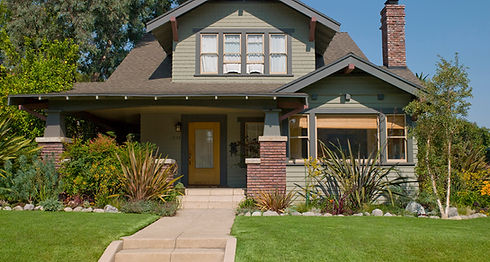Most common reasons water pressure is low.
- Eric F. Wheeler
- Feb 27, 2024
- 2 min read
When The Home Inspector inspects a home, he generally will run water in several fixtures at once. This is a good way to test water pressure. Sometimes the pressure is immediately low in just one fixture but usually the pressure drops off after two or more fixtures are turned on. The blog below addresses many of the most common reasons water pressure is low.

Low water pressure in a home can be frustrating and can affect various aspects of daily life, including showering, washing dishes, and doing laundry. Several factors can contribute to low water pressure in a home:
Municipal Water Supply Issues: Problems with the municipal water supply, such as water main breaks, system maintenance, or high demand during peak usage times, can lead to temporary decreases in water pressure throughout the neighborhood or community.
Clogged Pipes: Buildup of sediment, minerals, rust, or debris in pipes can restrict water flow and cause low water pressure. Over time, pipes can become clogged or partially blocked, especially in older plumbing systems.
Corroded Pipes: Corrosion of pipes, particularly in older homes with galvanized steel or iron pipes, can lead to the buildup of rust and scale inside the pipes, reducing the diameter of the pipe and restricting water flow.
Leaking Pipes: Leaks in the plumbing system, whether from pipes, fittings, valves, or fixtures, can result in decreased water pressure as water is diverted away from its intended destination.
Water Pressure Regulator: Malfunctioning or improperly adjusted water pressure regulators can lead to low water pressure by limiting the flow of water into the home from the municipal supply.
Partially Closed Valves: Partially closed or partially open shutoff valves at the main water supply line, individual fixtures, or appliances can restrict water flow and cause low water pressure in specific areas of the home.
Water Heater Issues: Sediment buildup in the water heater tank or faulty components in the water heater system can affect water pressure and flow rates throughout the home.
Elevation and Distance: Homes located at higher elevations or farther away from the municipal water source may experience lower water pressure due to gravitational forces and friction losses in the plumbing system.
Water Softener Problems: Improperly maintained or malfunctioning water softeners can contribute to low water pressure by reducing the flow of water through the plumbing system.
To address low water pressure issues, homeowners can start by checking for simple problems such as partially closed valves or clogged aerators on faucets. If the problem persists or is widespread, it may be necessary to consult a licensed plumber to diagnose and resolve the underlying causes of low water pressure in the home.



























Comentarios